Description
The Greater Amberjack is a popular recreational game fish in North America because of its size.Currently, it is considered one of the most important species in the commercial production of fish around the Mediterranean, and in North and South America.
The greater amberjack is also known as the allied kingfish, great amberfish, greater yellowtail, jenny lind, Sea donkey, purplish amberjack, reef donkey, rock salmon, sailors choice, yellowtail, and yellow trevally, is a species of predatory ray-finned fish in the family Carangidae, the jacks and pompanos. It is found in temperate, subtropical, and tropical seas around the world. It is a popular quarry species for recreational fisheries and is important in commercial fisheries. It is the largest species in the family Carangidae.
Size Facts
Greater amberjack can grow up to 6 feet long and live to be 17 years old. Adults can weigh up to 200 pounds, but are most commonly found to be up to 40 pounds. Females grow larger in size and live longer than males.
- Maturity: 39.10 inches
- Max length: 74.67 inches
- common length: 39.30 inches
- max. published weight: 177.32 kg
- max. reported age: 15 years
The Greater Amberjack is also known in Brazil as Olho de boi or Buri.
Where can the Greater Amberjack be found?
In the western Atlantic, they are found from Nova Scotia to Brazil, including the Gulf of Mexico and the Caribbean. Adults found in deep seaward reefs; occasionally entering coastal bays.
Circumglobal. Indo-West Pacific: South Africa, Persian Gulf, southern Japan and the Hawaiian Islands, south to New Caledonia; Mariana and Caroline islands in Micronesia. Western Atlantic: Bermuda (Ref. 26938), Nova Scotia, Canada to Brazil; also from the Gulf of Mexico and the Caribbean Sea (Ref. 9626). Eastern Atlantic: British coast (vagrant) to Morocco and the Mediterranean. Distribution in eastern central Atlantic along the African coast is not well established due to past confusion with Seriola carpenteri.
How does the Greater Amberjack look like?
The greater amberjack often have a distinctive olive colored bar from the snout through the eye, to the beginning of the dorsal fin and a broad amber-colored strip running horizontally, along the flanks.
Greater amberjack have a dark amber strip on their head, extending from their nose to their first dorsal (back) fin, which becomes more defined when the fish is excited or feeding.
Juveniles have a yellow color and five or six dark vertical bars along the sides.
How does the Greater Amberjack behave?
They feed primarily on fishes such as the bigeye scad, also on invertebrates (Ref. 4233). Small juveniles associate with floating plants or debris in oceanic and offshore waters. Juveniles form small schools or solitary (Ref. 5213). Eggs are pelagic (Ref. 4233). Utilized fresh and frozen; eaten pan-fried, broiled and baked.
Greater amberjack are mid-size fish that hang out in small groups. Adults eat mostly crab, squid, and other fishes found on reefs.
Health benefits
Amberjack is a prized fish, with white meat that is lean and easily digestible, its consumption is shown in a low-calorie diet and in those who suffer from gastrointestinal disorders. It contains minerals such as potassium and phosphorus: the one helps to keep the pressure in the standard and may decrease the risk of recurrent kidney stones and the risk of losing bone during aging; the other is important to the health of bones and teeth.
It is a source of omega 3 fatty acids, important for cardiovascular health. It also contains vitamin A, essential for eyesight, for the development and strengthening of bones, for the growth of teeth. Finally, the presence of vitamin D is important for the calcification of bones and for maintaining normal levels of calcium and phosphorus in the blood.
Taste profile
Greater amberjack has a rich, buttery flavor. The flavor has been described as a mix between tuna and mahi-mahi, though not as steak-like as tuna and not as mild as mahi-mahi.
The greaer amberjack is amazing in taste when served raw, and it is regarded as special treat in the world famous japanese culinary.
Cooking Methods:
- Raw
- Broiling
- Baking
- Grilling
- Pan frying
- Smoking
Greater Amberjack Videos
Nutritional facts
- Serving size: 3.5 oz
- Calories: 129 kcal
- Protein: 42 g
- Total Fat: 8.4 g
- Carbohydrates: 0.2 g
- Sodium: 0.4 g
Please click here for a detailed Greater Amberjack – Nutritional table
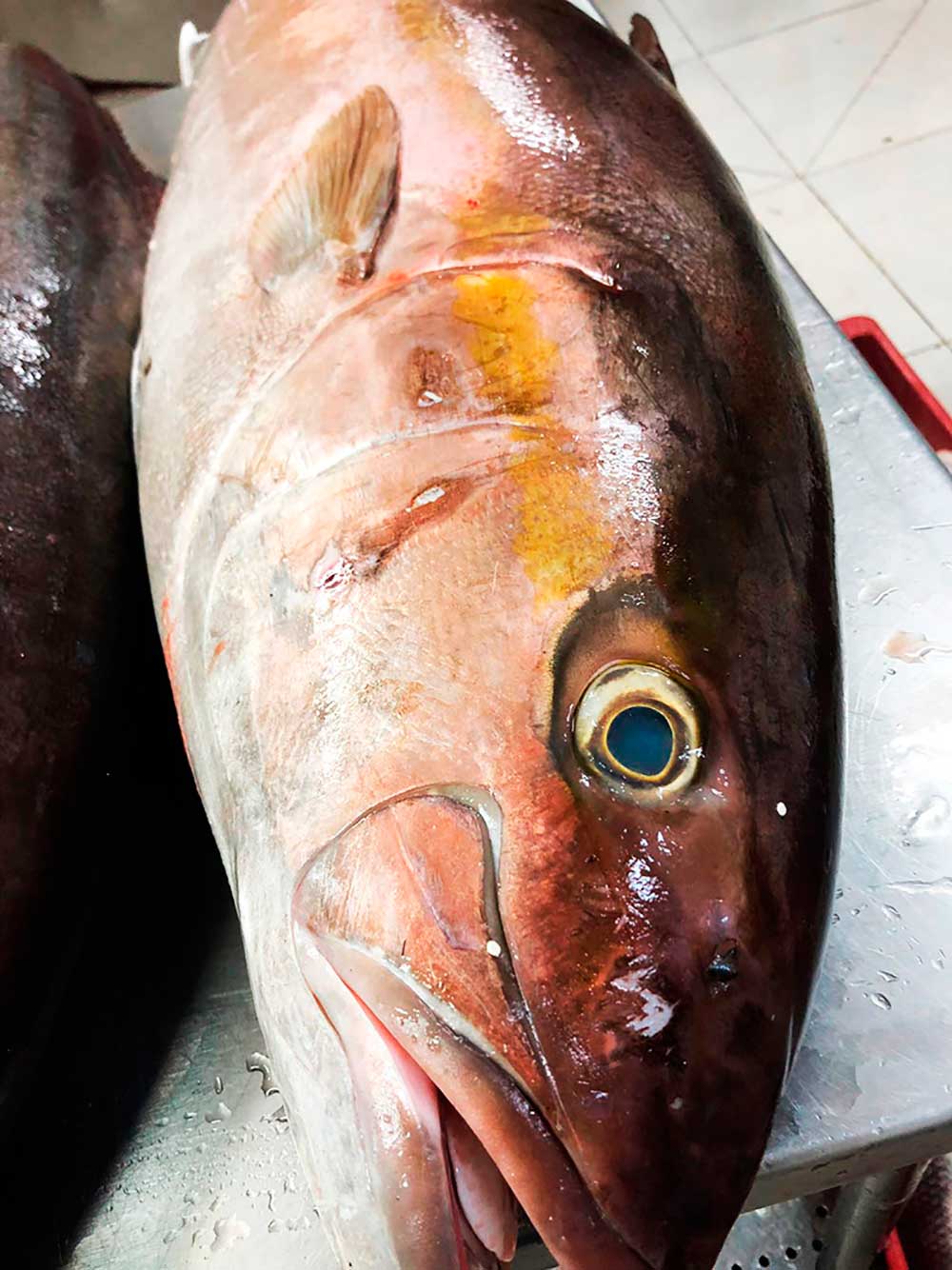
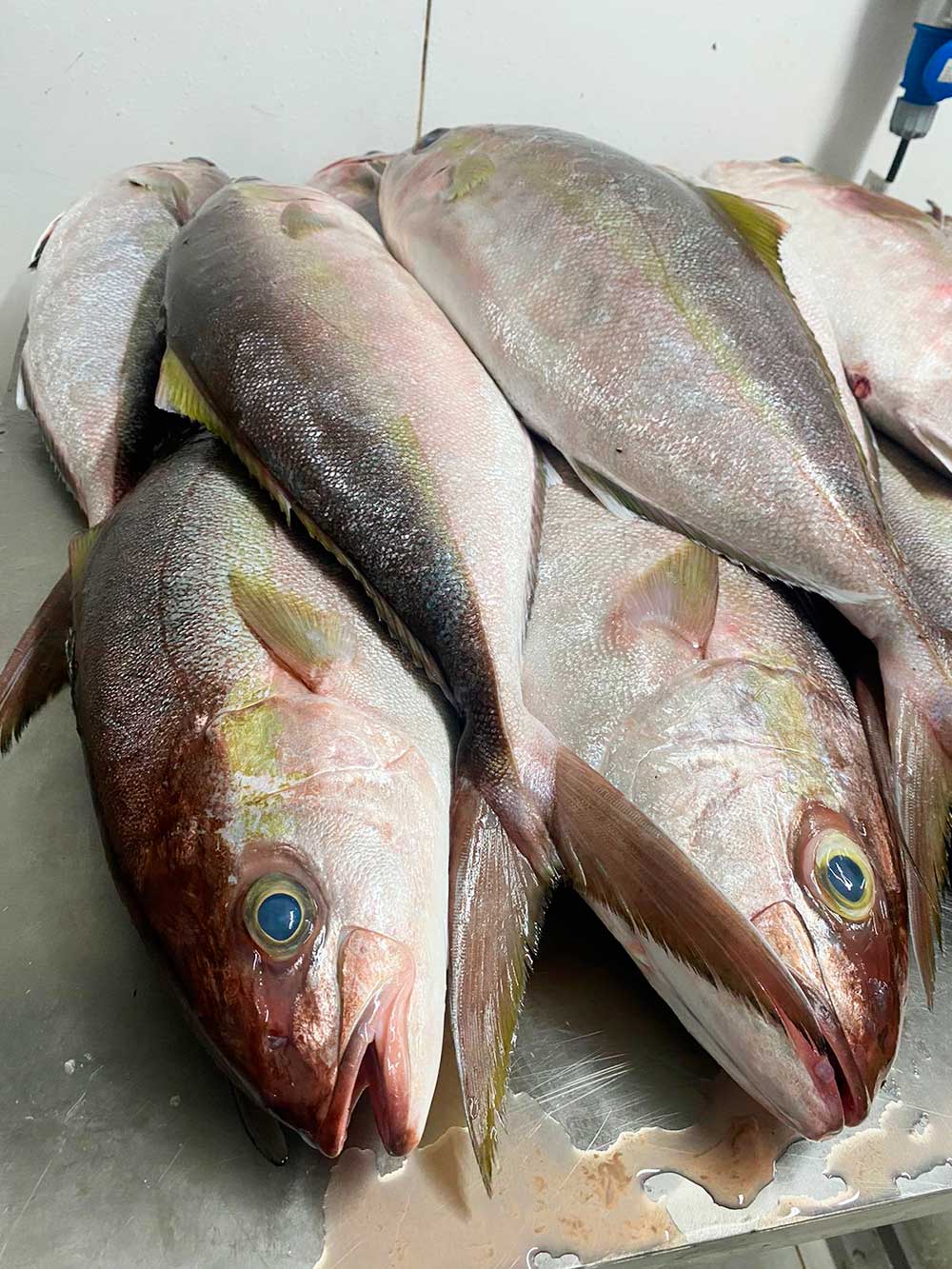
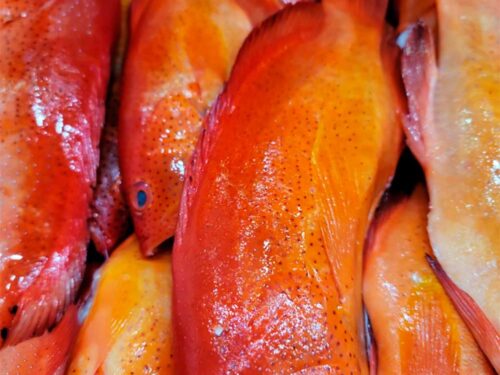
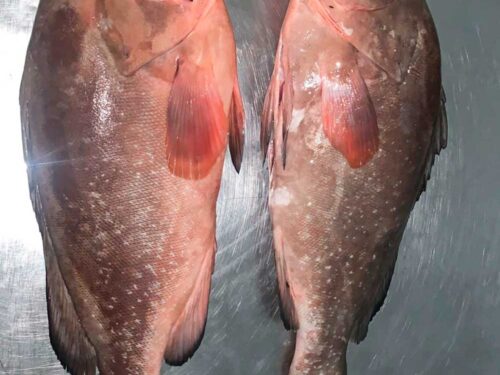

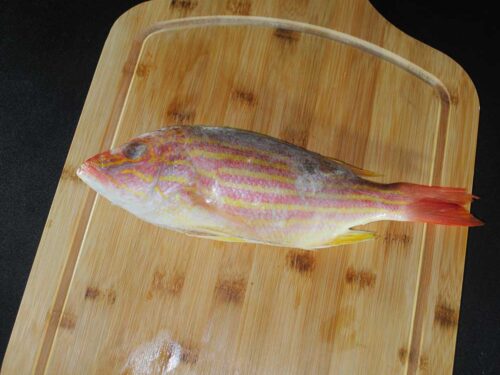
Reviews
There are no reviews yet.